1/25 #BOUsci20 #SESH7 Excited to be talking about fitting the lens of climate change on 21st century bird conservation at #BOUsci20 #ornithology #climatechange
2/25 #BOUsci20 #SESH7 Just wanted to thank my students, postdocs, friends, and funding agencies for their support #NSFfunded @NASAEarth @UW_FWEcology @WDNR @NEClimateSci
3/25 #BOUsci20 #SESH7 #ornithology Birds continue to face a myriad of threats, such as habitat loss and introduced predators. Since 1970, North America has lost 2.9 billion birds. https://science.sciencemag.org/content/366/6461/120">https://science.sciencemag.org/content/3...
4/25 #BOUsci20 #SESH7 #ornithology We are now entering the #Anthropocene and hurtling towards a new planetary phase of warmer temperatures and extreme conditions not experienced for thousands of years https://www.pnas.org/content/115/33/8252">https://www.pnas.org/content/1...
5/25 #BOUsci20 #SESH7 #ornithology Birds are facing an unprecedented challenge of respond to a rapidly changing climate. They must move, adapt, or face extinction.
6/25 #BOUsci20 #SESH7 #ornithology We must assess climate change vulnerability for birds. Vulnerability reflects sensitivity, exposure, and adaptive capacity. Bird conservation must focus on https://abs.twimg.com/emoji/v2/... draggable="false" alt="⬇️" title="Pfeil nach unten" aria-label="Emoji: Pfeil nach unten">sensitivity,
https://abs.twimg.com/emoji/v2/... draggable="false" alt="⬇️" title="Pfeil nach unten" aria-label="Emoji: Pfeil nach unten">sensitivity,  https://abs.twimg.com/emoji/v2/... draggable="false" alt="⬇️" title="Pfeil nach unten" aria-label="Emoji: Pfeil nach unten"> exposure, or
https://abs.twimg.com/emoji/v2/... draggable="false" alt="⬇️" title="Pfeil nach unten" aria-label="Emoji: Pfeil nach unten"> exposure, or  https://abs.twimg.com/emoji/v2/... draggable="false" alt="⬆️" title="Pfeil nach oben" aria-label="Emoji: Pfeil nach oben"> adaptive capacity. https://science.sciencemag.org/content/341/6145/504">https://science.sciencemag.org/content/3...
https://abs.twimg.com/emoji/v2/... draggable="false" alt="⬆️" title="Pfeil nach oben" aria-label="Emoji: Pfeil nach oben"> adaptive capacity. https://science.sciencemag.org/content/341/6145/504">https://science.sciencemag.org/content/3...
7/25 #BOUsci20 #SESH7 #ornithology Many organizations, like @audubonsociety, use models to assess the vulnerability of birds to climate change. More than 2/3 or North American birds are threatened by a rapidly changing climate! https://www.audubon.org/climate/survivalbydegrees">https://www.audubon.org/climate/s...
8/25 #BOUsci20 #SESH7 #ornithology We have two pressing challenges in understanding vulnerability. (1) We don’t have a good understanding of climate variability impacts birds (2) When we do identify vulnerable species, we lack specific strategies for managers to implement.
9/25 #BOUsci20 #SESH7 #ornithology Climate variability is distinct from #climatechange because it relates to predictable fluctuations in temperature and rainfall occurring over months and years. Climate indices, such as the El Niño Southern Oscillation, captures these changes.
10/25 #BOUsci20 #SESH7 #ornithology A common, yet overlooked, form of climate variability are climate #dipoles - opposite patterns of temp or precip extremes appearing at different geographic locations at the same time. This climate seesaw occurs over continents and oceans.
11/25 #BOUsci20 #SESH7 #ornithology Climate dipoles can induce ecological dipoles by synchronizing ecological processes in regions closer together, but desynchronizing processes in regions farther apart. Boom - an ecological dipole! https://www.cell.com/trends/ecology-evolution/fulltext/S0169-5347(20)30012-4">https://www.cell.com/trends/ec...
12/25 #BOUsci20 #SESH7 #ornithology These ecological dipoles exist! Check out great work by @LaMontagneLab who found #dipole patterns in the masting of white spruce at continental scales. https://www.nature.com/articles/s41477-020-0647-x">https://www.nature.com/articles/...
13/25 #BOUsci20 #SESH7 #ornithology Of course, irruptive birds in boreal Canada respond to the boom-bust cycles of masting. Pine Siskins shown dipoles in their irruption patterns that are associated with climate dipoles at multiple time lags. https://www.pnas.org/content/112/21/E2795">https://www.pnas.org/content/1...
14/25 #BOUsci20 #SESH7 #ornithology Dipoles influence marine birds. King Penguins feed at the Antarctic polar front but warm phasing of the Indian Ocean Dipole pushes the front south; adults go farther for food, young suffer, and populations decline. https://www.nature.com/articles/s41558-018-0388-2">https://www.nature.com/articles/...
15/25 #BOUsci20 #SESH7 #ornithology Climate variability, and climate dipoles, pose a critical aspect of how climate change effects bird. But we still struggle when it comes to recommending specific actions for managers to reduce the vulnerability of birds to climate change.
16/25 #BOUsci20 #SESH7 #ornithology Climate change adaptation offers a framework based on ecosystem management. Resistance and Resilience strives to maintain current conditions. Strategies of Transition recognize that change will occur and attempts to facilitate that change.
17/25 #BOUsci20 #SESH7 #ornithology A major challenge is to work with managers to translate broader concepts and strategies to actions that can be implemented on the ground. https://wildlife.onlinelibrary.wiley.com/doi/full/10.1002/jwmg.21969">https://wildlife.onlinelibrary.wiley.com/doi/full/...
18/25 #BOUsci20 #SESH7 #ornithology Identifying and protecting microrefugia could be an important strategy. Montane environments host unique microclimates that are used by birds. These areas can buffer montane birds from extreme summer temperatures. https://onlinelibrary.wiley.com/doi/full/10.1111/ddi.12688">https://onlinelibrary.wiley.com/doi/full/...
19/25 #BOUsci20 #SESH7 #ornithology Microclimates even exist in grasslands. Drones and thermography can detect microrefugia that could protect grassland bird nests from heat waves.
20/25 #BOUsci20 #SESH7 #ornithology Managing forests to be resistant to high severity fires is an increasingly important strategy for protecting birds, such as the spotted owl. https://esajournals.onlinelibrary.wiley.com/doi/full/10.1002/fee.1298">https://esajournals.onlinelibrary.wiley.com/doi/full/...
21/25 #BOUsci20 #SESH7 #ornithology Climate change adaptation tactics include thinning and controlled burning. Such actions can help restore historical structure and function - reducing tree density, water competition, and fuel. Ultimately, reducing severe fires and drought.
22/25 #BOUsci20 #SESH7 #ornithology What’s good for forest resilience is good for owls. Thinning and burning may pose potential short term costs to spotted owl populations, but the long term benefits of increasing fire resilience outweigh these costs. https://besjournals.onlinelibrary.wiley.com/doi/full/10.1111/1365-2664.12600">https://besjournals.onlinelibrary.wiley.com/doi/full/...
23/25 #BOUsci20 #SESH7 #ornithology Protected areas are important stepping stones for range shifting birds. Models can be used to project future changes within National Parks. We can now communicate which parks will see changes in bird communities https://www.audubon.org/climate/national-parks">https://www.audubon.org/climate/n...
24/25 #BOUsci20 #SESH7 #ornithology An obstacle for climate change adaptation are mismatches between researchers and managers. Mismatches of space, time, priority setting, communication, and institutional barriers. We must bridge the gap bet. climate science and #ClimateAction  https://abs.twimg.com/hashflags... draggable="false" alt="">
https://abs.twimg.com/hashflags... draggable="false" alt="">
25/25 #BOUsci20 #SESH7 #ornithology Climate change will only exacerbate threats of habitat loss and pollution. We can learn from our past conservation successes as well as our mistakes. Climate change poses an immense challenge, but not an insurmountable one.

 Read on Twitter
Read on Twitter

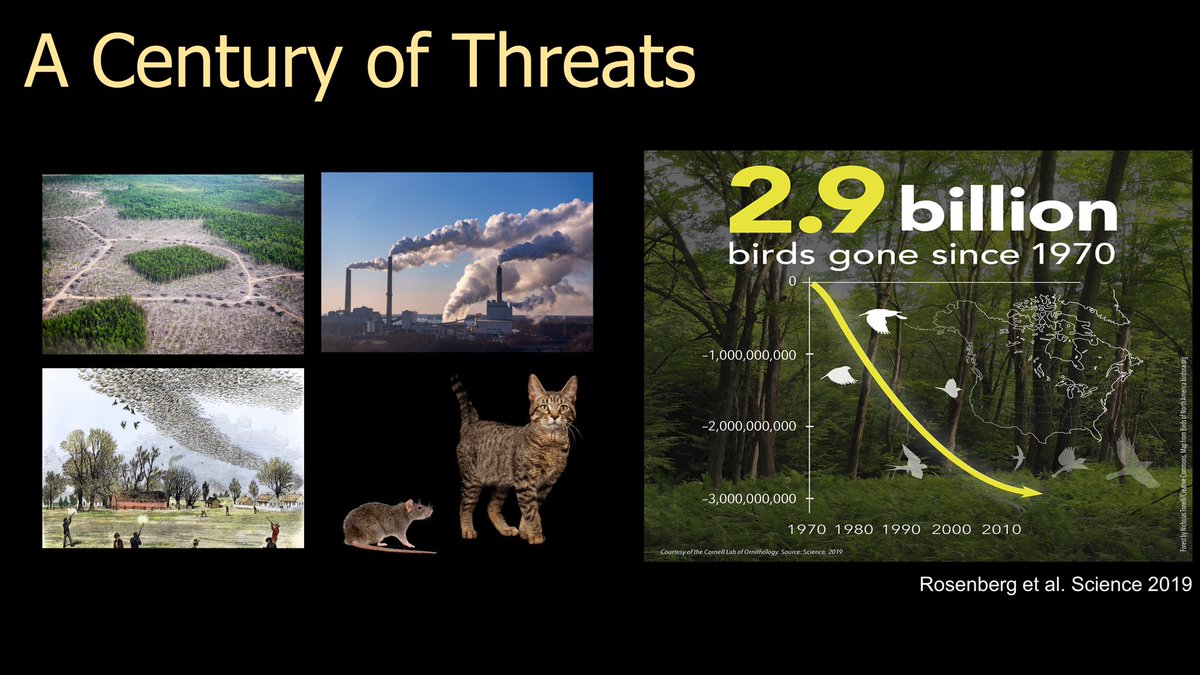


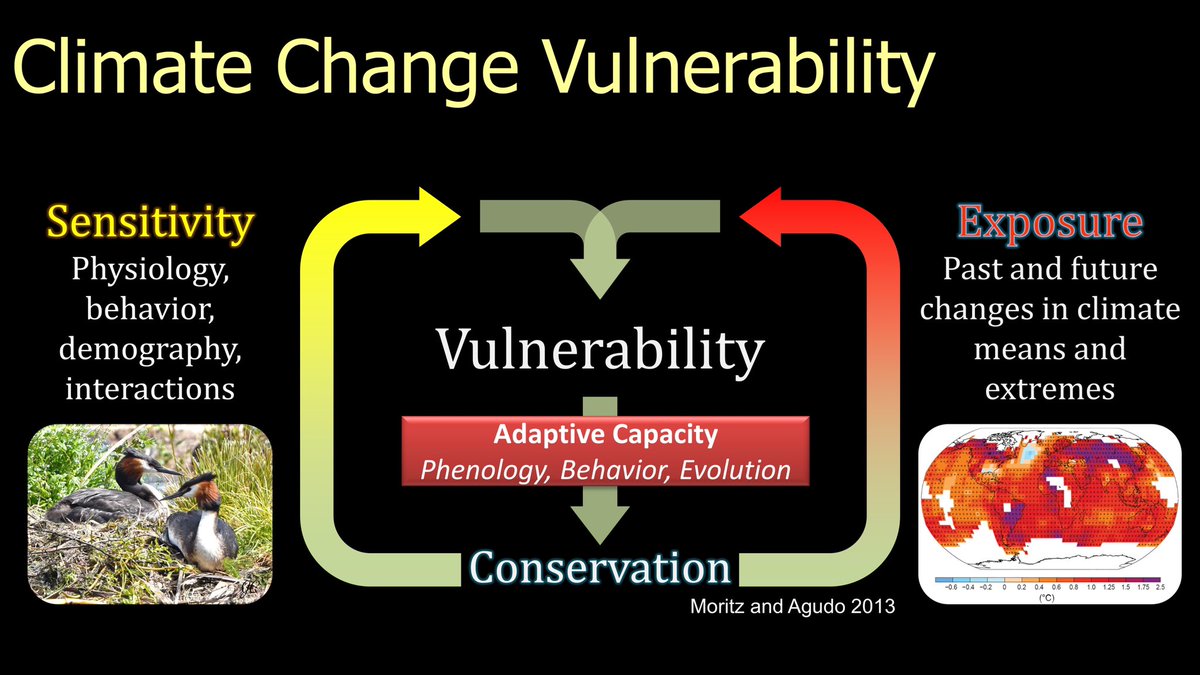 sensitivity, https://abs.twimg.com/emoji/v2/... draggable="false" alt="⬇️" title="Pfeil nach unten" aria-label="Emoji: Pfeil nach unten"> exposure, or https://abs.twimg.com/emoji/v2/... draggable="false" alt="⬆️" title="Pfeil nach oben" aria-label="Emoji: Pfeil nach oben"> adaptive capacity. https://science.sciencemag.org/content/3..." title="6/25 #BOUsci20 #SESH7 #ornithology We must assess climate change vulnerability for birds. Vulnerability reflects sensitivity, exposure, and adaptive capacity. Bird conservation must focus onhttps://abs.twimg.com/emoji/v2/... draggable="false" alt="⬇️" title="Pfeil nach unten" aria-label="Emoji: Pfeil nach unten">sensitivity, https://abs.twimg.com/emoji/v2/... draggable="false" alt="⬇️" title="Pfeil nach unten" aria-label="Emoji: Pfeil nach unten"> exposure, or https://abs.twimg.com/emoji/v2/... draggable="false" alt="⬆️" title="Pfeil nach oben" aria-label="Emoji: Pfeil nach oben"> adaptive capacity. https://science.sciencemag.org/content/3..." class="img-responsive" style="max-width:100%;"/>
sensitivity, https://abs.twimg.com/emoji/v2/... draggable="false" alt="⬇️" title="Pfeil nach unten" aria-label="Emoji: Pfeil nach unten"> exposure, or https://abs.twimg.com/emoji/v2/... draggable="false" alt="⬆️" title="Pfeil nach oben" aria-label="Emoji: Pfeil nach oben"> adaptive capacity. https://science.sciencemag.org/content/3..." title="6/25 #BOUsci20 #SESH7 #ornithology We must assess climate change vulnerability for birds. Vulnerability reflects sensitivity, exposure, and adaptive capacity. Bird conservation must focus onhttps://abs.twimg.com/emoji/v2/... draggable="false" alt="⬇️" title="Pfeil nach unten" aria-label="Emoji: Pfeil nach unten">sensitivity, https://abs.twimg.com/emoji/v2/... draggable="false" alt="⬇️" title="Pfeil nach unten" aria-label="Emoji: Pfeil nach unten"> exposure, or https://abs.twimg.com/emoji/v2/... draggable="false" alt="⬆️" title="Pfeil nach oben" aria-label="Emoji: Pfeil nach oben"> adaptive capacity. https://science.sciencemag.org/content/3..." class="img-responsive" style="max-width:100%;"/>
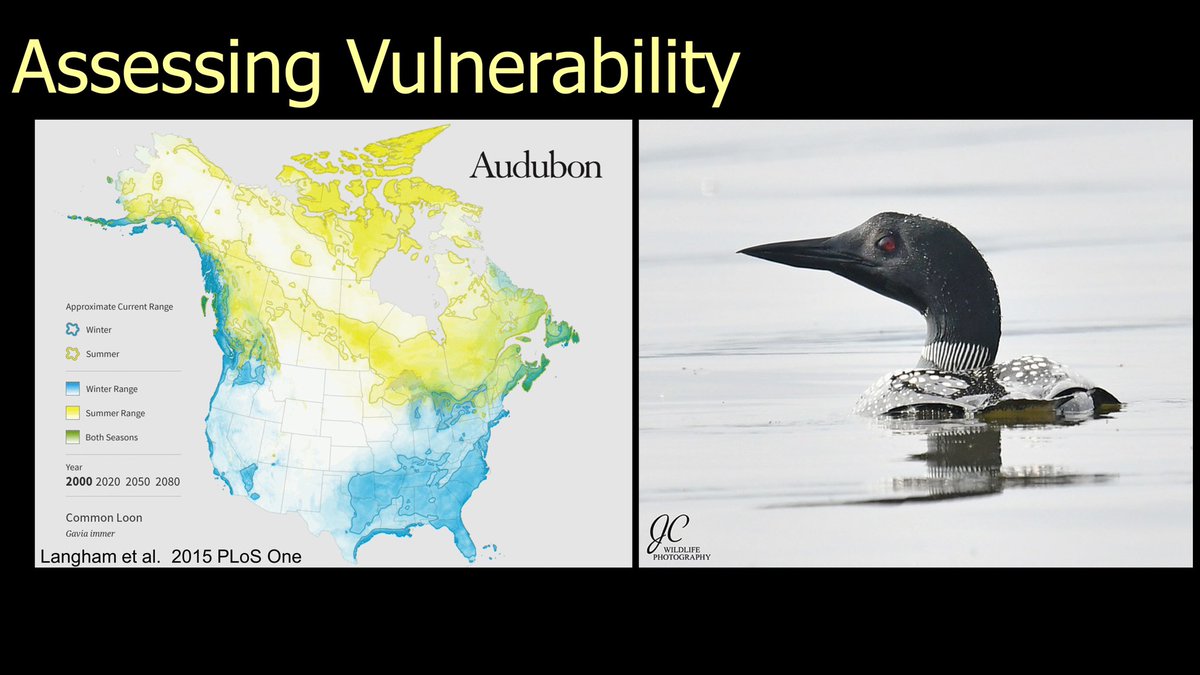
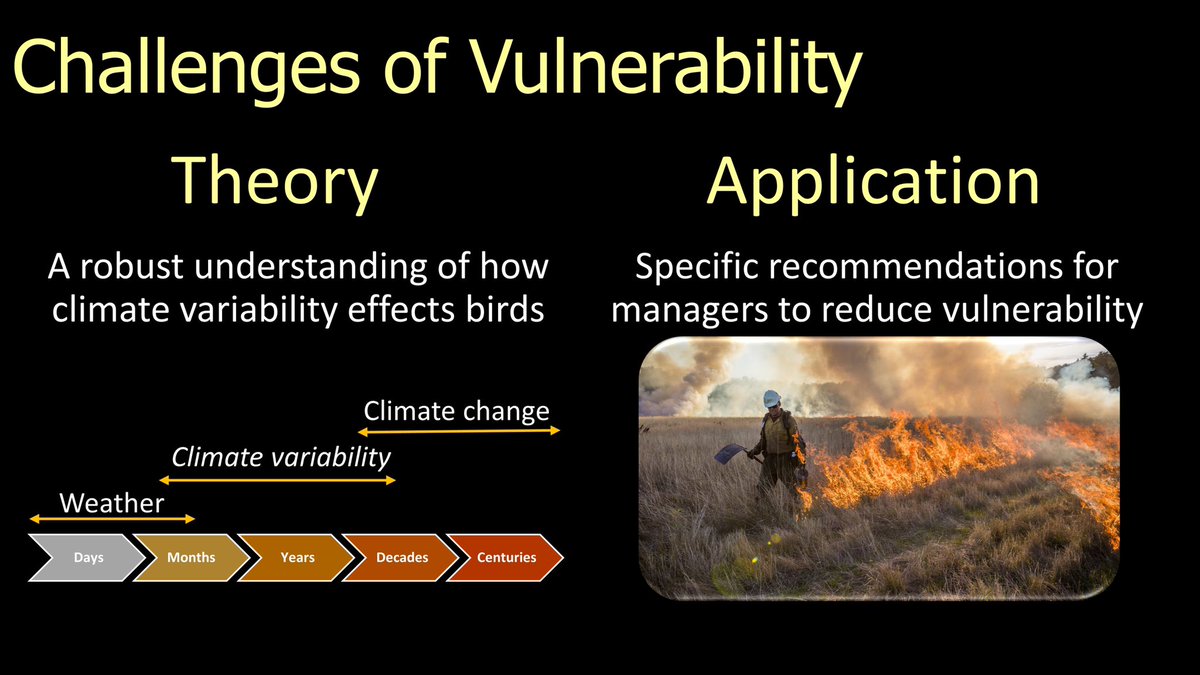

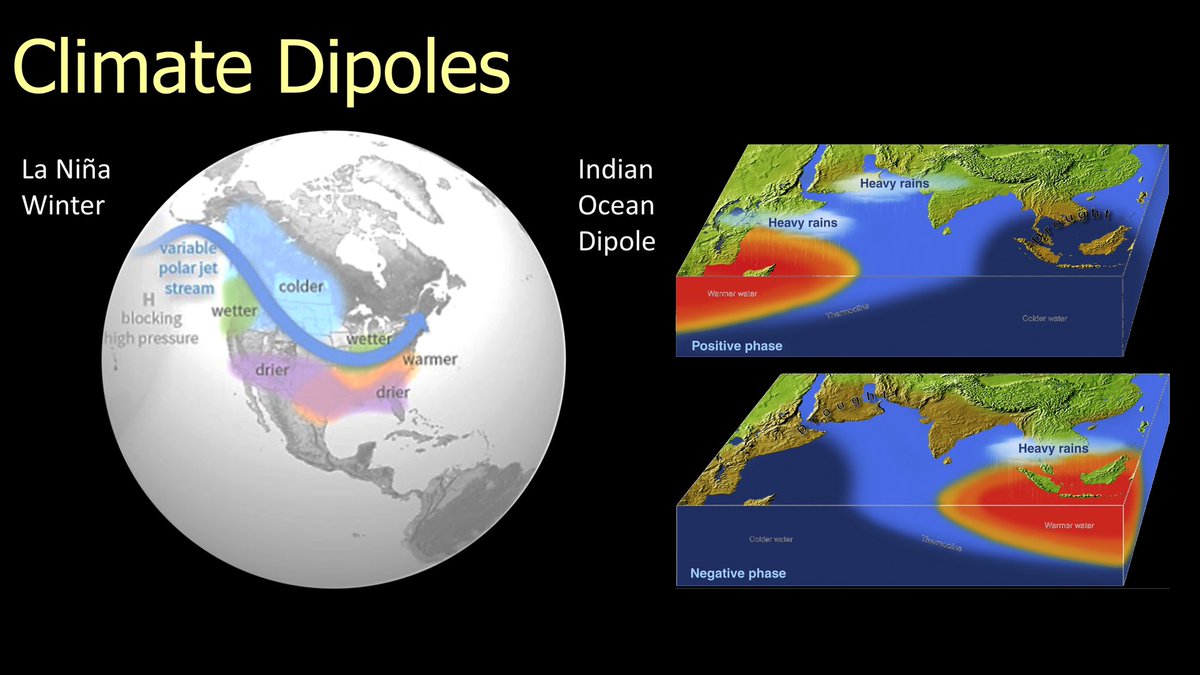
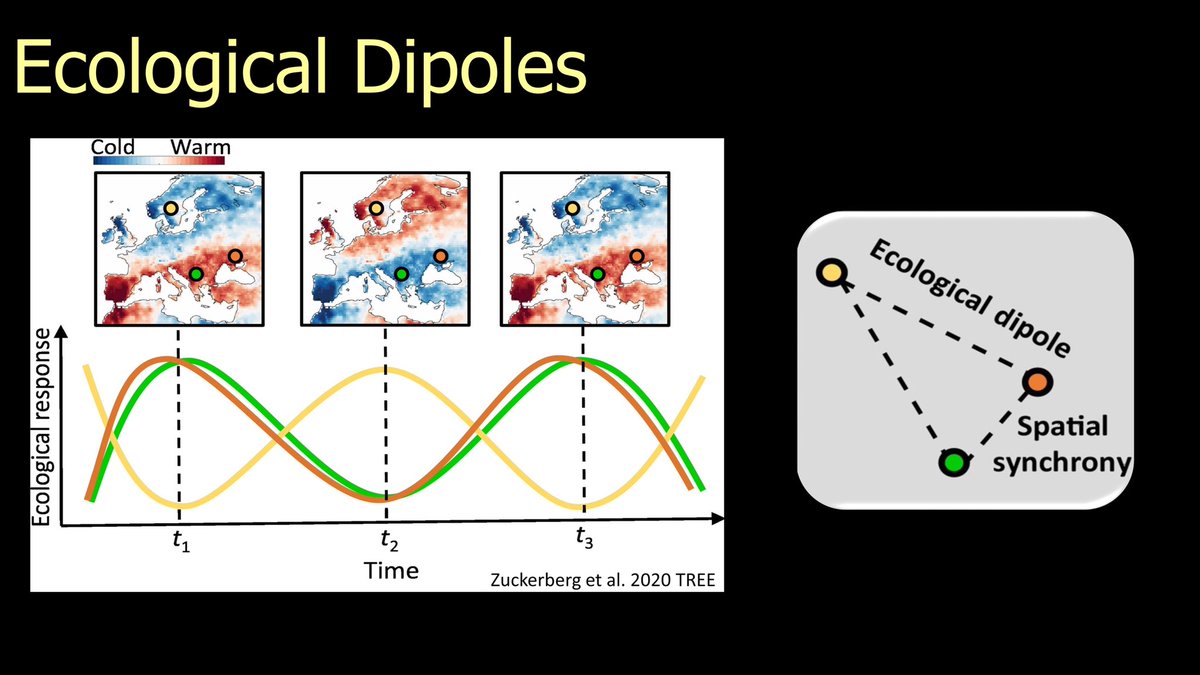
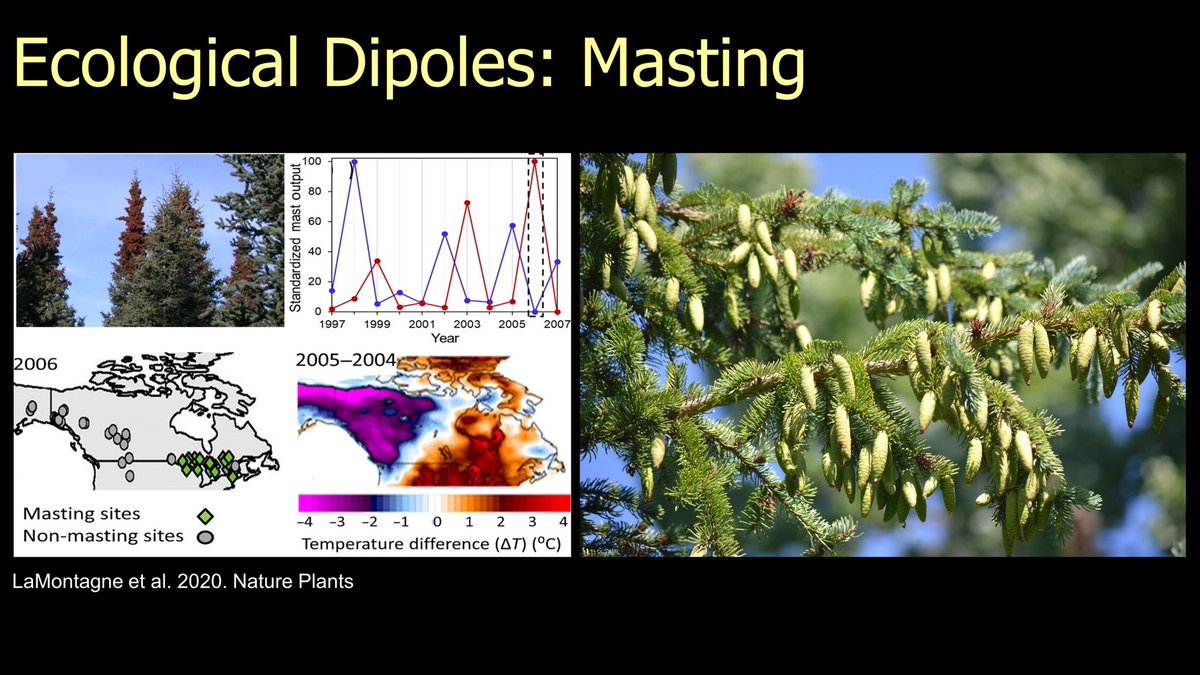





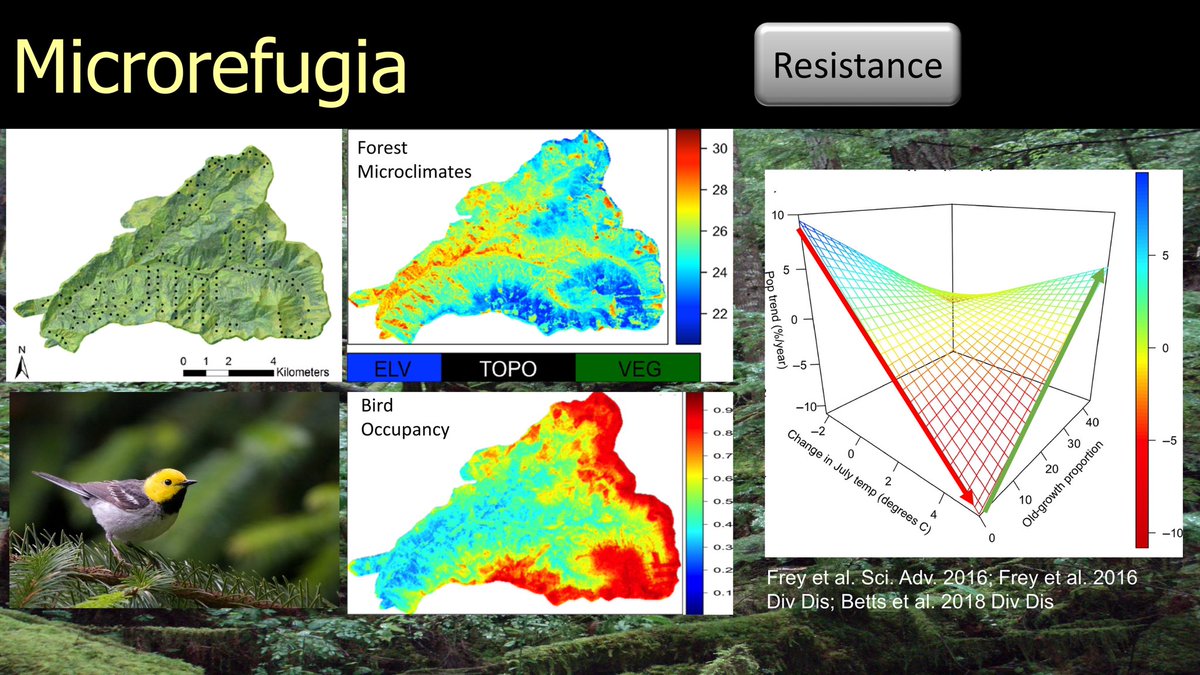

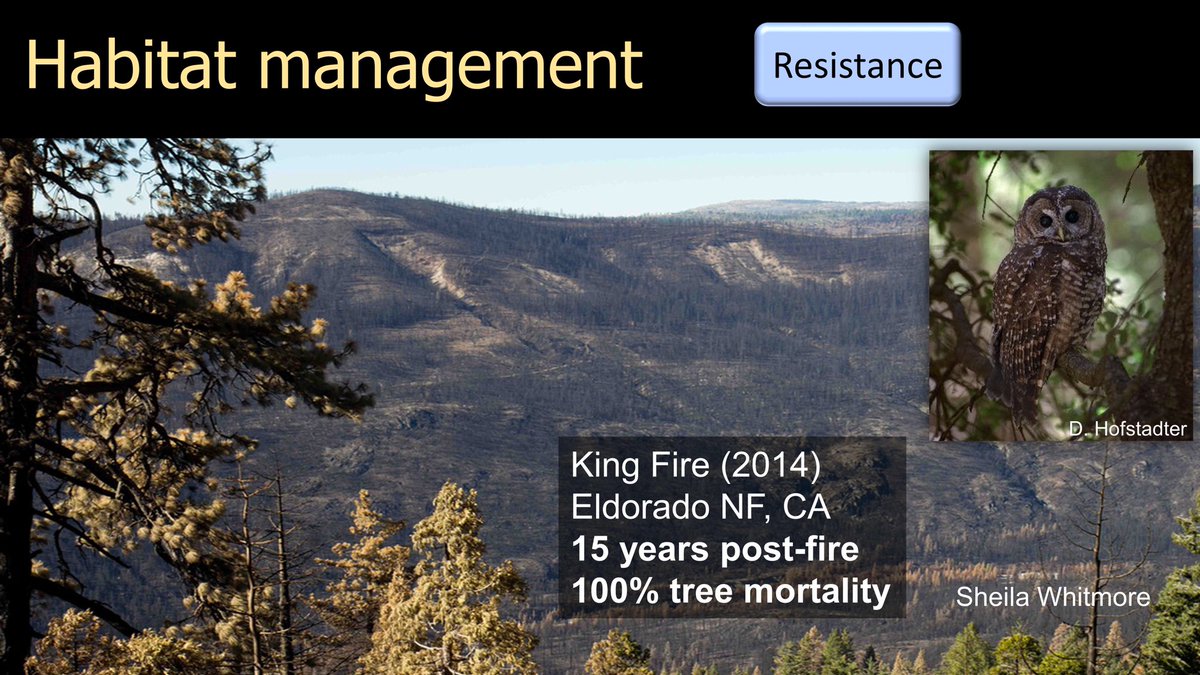
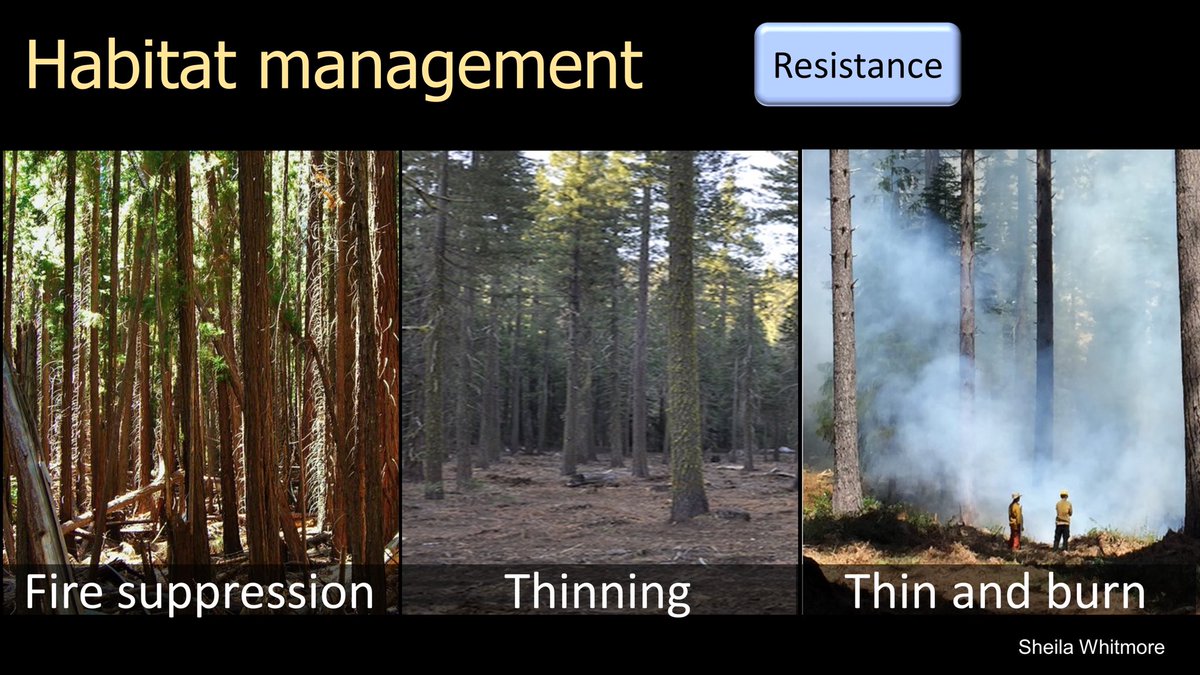
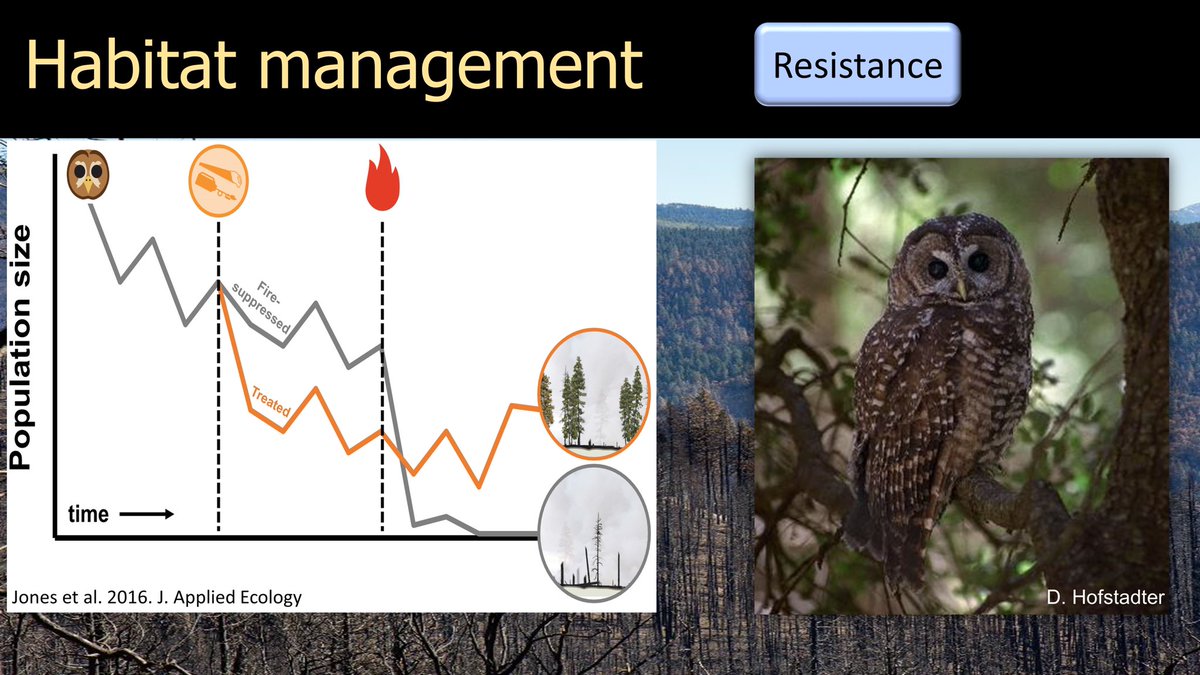
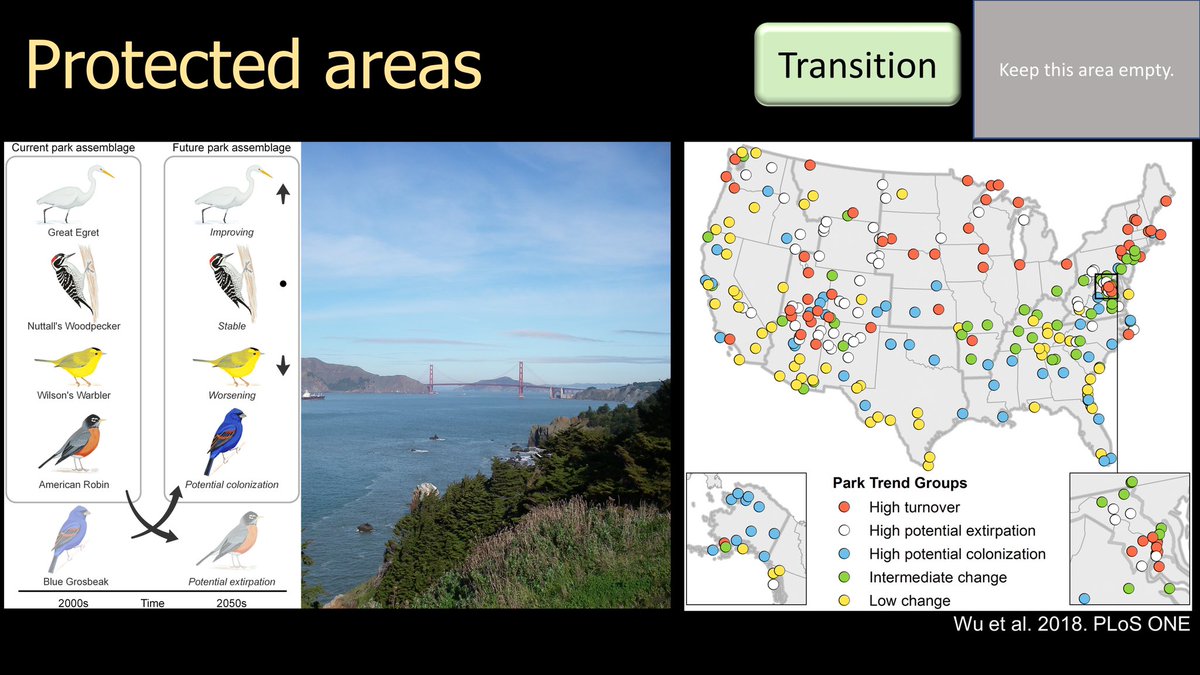
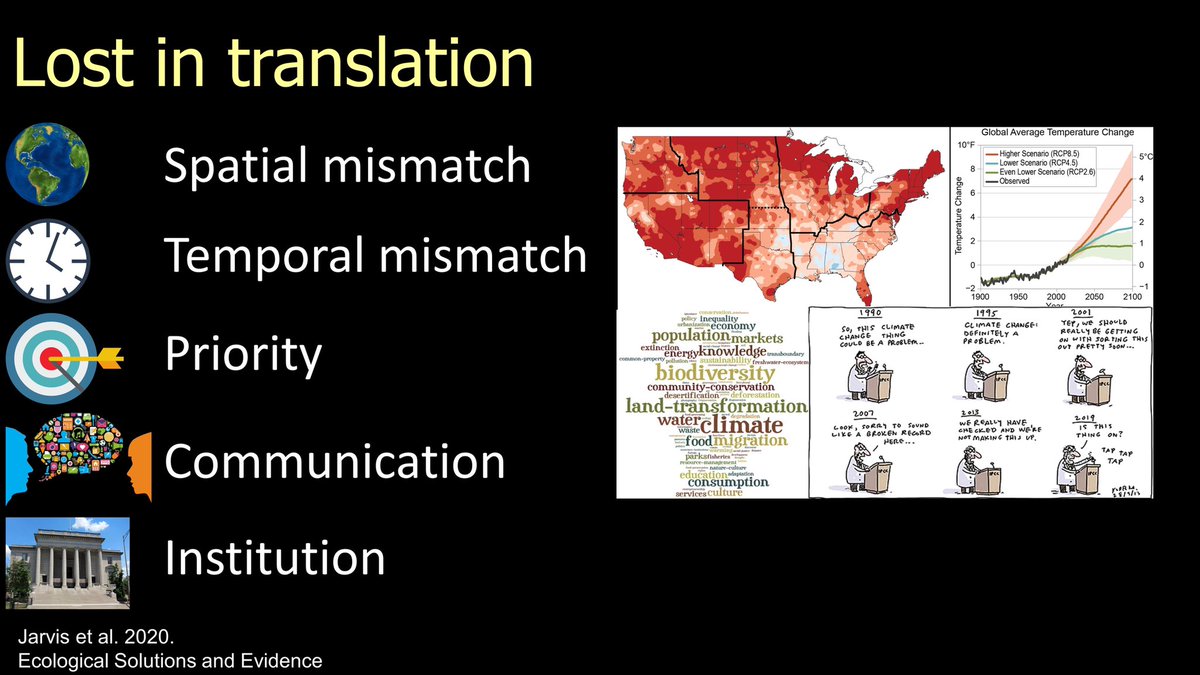 " title="24/25 #BOUsci20 #SESH7 #ornithology An obstacle for climate change adaptation are mismatches between researchers and managers. Mismatches of space, time, priority setting, communication, and institutional barriers. We must bridge the gap bet. climate science and #ClimateAction https://abs.twimg.com/hashflags... draggable="false" alt="">" class="img-responsive" style="max-width:100%;"/>
" title="24/25 #BOUsci20 #SESH7 #ornithology An obstacle for climate change adaptation are mismatches between researchers and managers. Mismatches of space, time, priority setting, communication, and institutional barriers. We must bridge the gap bet. climate science and #ClimateAction https://abs.twimg.com/hashflags... draggable="false" alt="">" class="img-responsive" style="max-width:100%;"/>



